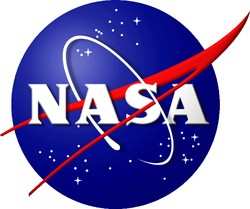NASA Unveils New Space-Weather Science Tool
 When NASA's satellite operators need accurate, real-time
space-weather information, they turn to the Community Coordinated
Modeling Center (CCMC) of the Space Weather Laboratory at NASA's
Goddard Space Flight Center in Greenbelt, MD. The CCMC's newest and
most advanced space-weather science tool is the Integrated Space
Weather Analysis (iSWA) system.
When NASA's satellite operators need accurate, real-time
space-weather information, they turn to the Community Coordinated
Modeling Center (CCMC) of the Space Weather Laboratory at NASA's
Goddard Space Flight Center in Greenbelt, MD. The CCMC's newest and
most advanced space-weather science tool is the Integrated Space
Weather Analysis (iSWA) system.
The iSWA provides information about space weather conditions
past, present, and future and, unlike many other programs currently
in use, has an interface that the user can customize to suit a
unique set of data requirements. "The iSWA space-weather data
analysis system offers a unique level of customization and
flexibility to maintain, modify, and add new tools and data
products as they become available," says Marlo Maddox, iSWA system
chief developer at NASA Goddard.
iSWA draws together information about conditions from the sun to
the boundary of the sun's influence, known as the heliosphere. The
iSWA systems digests information from spacecraft including the
National Oceanic and Atmospheric Administration's (NOAA)
Geostationary Operational Environmental Satellites (GOES), NASA's
Solar Terrestrial Relations Observatory (STEREO), the joint
European Space Agency and NASA mission Solar and Heliospheric
Observatory (SOHO), and NASA's Advanced Composition Explorer
(ACE),
Citizen scientists and science enthusiasts can also use the
data, models, and tools of the iSWA system. Similar to the way in
which armchair astronomers have used SOHO data to discover comets,
enthusiasts will find the iSWA system a wonderful resource for
increasing their familiarity with the concept of space weather. "We
are continuously evolving the iSWA system, and we hope that it will
benefit not only NASA satellite operators, but also that it may
help space-weather forecasting at other agencies such as the Air
Force Weather Agency and NOAA," says Michael Hesse, chief of the
Space Weather Laboratory at NASA Goddard.
 Space-weather information tends to be scattered over various
Web sites. NASA Goddard space physicist Antti Pulkkinen says the
iSWA system represents "the most comprehensive single interface for
general space-weather-related information," providing data on past
and current space-weather events. The system allows the user to
configure or design custom displays of the information.
Space-weather information tends to be scattered over various
Web sites. NASA Goddard space physicist Antti Pulkkinen says the
iSWA system represents "the most comprehensive single interface for
general space-weather-related information," providing data on past
and current space-weather events. The system allows the user to
configure or design custom displays of the information.
The system compiles data about conditions on the sun, in Earth's
magnetosphere -- the protective magnetic field that envelops our
planet -- and down to Earth's surface. It provides a user interface
to provide NASA's satellite operators and with a real-time view of
space weather. In addition to NASA, the iSWA system is used by the
Air Force Weather agency.
Access to space-weather information that combines data from
state-of-the-art space-weather models with concurrent observations
of the space environment provides a powerful tool for users to
obtain a personalized "quick look" at space-weather information,
detailed insight into space-weather conditions, as well as tools
for historical analysis of the space-weather's impact.
Development of the iSWA system has been a joint activity between
the Office of the Chief Engineer at NASA Headquarters and the
Applied Engineering and Technology Directorate and the Science and
Exploration Directorate at NASA Goddard. The iSWA system is located
at NASA Goddard. The Community Coordinated Modeling Center is
funded by the Heliophysics Division in the Science Mission
Directorate at NASA Headquarters, and the National Science
Foundation.
 ANN's Daily Aero-Term (10.12.25): High Speed Taxiway
ANN's Daily Aero-Term (10.12.25): High Speed Taxiway Aero-News: Quote of the Day (10.12.25)
Aero-News: Quote of the Day (10.12.25) Classic Aero-TV: PBY Catalina-From Wartime to Double Sunrises to the Long Sunset
Classic Aero-TV: PBY Catalina-From Wartime to Double Sunrises to the Long Sunset ANN's Daily Aero-Linx (10.12.25)
ANN's Daily Aero-Linx (10.12.25) Airborne 10.06.25: FAA Furloughs, Airshows Hit By Shutdown, Livestream Accident
Airborne 10.06.25: FAA Furloughs, Airshows Hit By Shutdown, Livestream Accident




